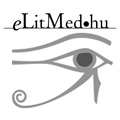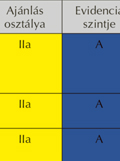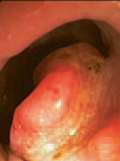The eLitMed.hu medical portal uses computer cookies for convenient operation. Detailed information can be found in the Cookie-policy.
Lege Artis Medicinae - 2019;29(11)
Content
[Neuropathic pain: spotligth on amitriptyline]
[The management of neuropathic pain is a challenge both for patients and medical professioners. A novel approach is recommended for its management based on the novel neurobiological results of pain research. Multidisciplinary teams and medical consensus are required due to the variety of symptoms and concomittant psychopathology. This approach allows us to avoid extensive diagnostic and trerapeutic workups and appropiate treatment for our patients. Most extensive evidence is available for pharmacological treatment, and currently recommended first-line treatments include antidepressants (tricyclic agents and serotonin-norepinephrine reuptake inhibitors) and anticonvulsants (gabapentin and pregabalin). The aim of our review was to collect articles focusing on the efficacy of the most widely available and cheapest tricyclic agent, amitriptyline in different neuropathic pain conditions. ]
[The association between advanced age and peripheral arterial disease]
[The high-income countries are characterized by the aging of the residents (epidemiological transition) and the change of the disease patterns that are recognized in the population (epidemiological transition). In that sense, considering the cardiovascular diseases in the last few decades, a decline of mortality of acute, fatal conditions (stroke, myocardial infarction) is notable. All these factors contributed to the recognition of the importance of peripheral arterial disease and related problems in the aging population of the affected people. The high prevalence, the decline of quality of life associated with compromised lower limb circulation, the risk of the limb loss, the challenge of rehabilitation and the high mortality represent a significant and increasing burden to the healthcare. The review aims to analyse the relation of the aging population and peripheral arterial disease, addressing the aspects of epidemiology, diagnostics, and therapy. ]
[The hypertensive, non-diabetic nephropathy]
[According to the increase of the number of the hypertensive patients the prevalence of hypertensive nephropathy will increase also. According to the data in the Registry of Hungarian Society of Hypertension, in 2015 the proportion of hypertension patients with chronic kidney disease was 12.3% of the males, 39.1% of the females and generally 26.1% of all the hypertensives. In Hungary the hypertensive nephropathy was the 2nd most common condition led to chronic dialysis in 2010 and 2015 (21% and 22%). According to the Hungarian Society of Hypertension 2018 Guideline the classic inhibitors of the renin-angiotensin system can decrease significantly the progression of renal function decline and the proteinuria. ]
[White-coat and masked hypertension]
[White-coat hypertension is a heterogenous clinical entity, that includes patients with lower and higher cardivascular risk. Its prognosis is relatively benign, when it is not associated with other cardiovascular risk factors. Therefore, cardiovascular risk evaluation has utmost importance in patients with white-coat hypertension for the determination of appropriate treatment. Masked hypertension, however, is not a benign phenotype, as it has been proven. Its early recognition, regular follow-up and effective antihypertensive drug treatment are mandatory. ]
[Hypertension in the elderly ]
[Elevated isolated systolic pressure is the most common and greatest cardiovascular risk factor with age. The prevalence of hypertension increases with age and exceeds 60% over 70 years. Proper treatment of hypertension in the elderly, even in very old age (> 80 years), increases life expectancy and reduces the risk of cardiovascular events. For patients over 65 years of age, the target blood pressure range is between 130-139 / 70-80 mmHg if the patient tolerates the treatment. In elderly patients with poorer conditions, systolic blood pressure may be <150 mmHg. White-coat hypertension is common, nondipper ratio is increased, autonomic nervous system dysregulation is more common, and orthostatic decrease of blood pressure. The renal function is decreased or already impaired, often resulting in poorer therapeutic cooperation due to impaired cognitive function. The blood pressure lowering effect of targeted lifestyle changes may be the same as medication monotherapy, with the main disadvantage of decreasing adherence over time, for which a proper physician-patient relationship is essential. First-line agents for the treatment of elderly hypertension include angiotensin converting enzyme inhibitors (ACE inhibitors), angiotensin receptor blockers (ARBs), long-acting calcium channel blockers, and thiazide, thiazide-like diuretics. Beta-blockers should be used in the treatment of elderly hypertension if they have other indications (coronary heart disease, heart failure, arrhythmias). More than 70% of hypertensive patients should use combination therapy to achieve target blood pressure. Take advantage of fixed dose combination to improve compliance to optimize treatment. ]
[Hypertensive emergency conditions in Family practice]
[Family doctors play an important role in the treatment of high blood pressure emergencies. There are two forms of these: hypertensive, non-life-threatening states (urgency) and the hypertensive crisis (emergency) with life-threatening complications. The boundary between these two forms is not sharp, and a non-life-threatening urgency can turn into a hypertensive crisis. Hypertensive emergency is defined as an acute, marked increase of blood pressure with concomitant life-threatening target organ dysfunction. Treatment always requires hospitalization and parenteral administration of antihypertensive agents. In the case of hypertensive urgency, the acute increase of blood pressure is not complicated with organ damage. In these cases treatment can be performed in primary care with oral drugs. ]
[Vascular biomarkers ]
[While risk scores are invaluable tools for adapted preventive strategies, a significant gap exists between predicted and actual event rates. Additional tools to further refine the risk stratification of patients at an individual level are biomarkers. A surrogate endpoint is a biomarker that is intended as a substitute for and being realized earlier than a clinical hard endpoint. In order to be suitable as a surrogate endpoint of cardiovascular events, a biomarker should meet several well-defined criteria. It has been proposed that a plenty of potential vascular biomarkers would have a role in primary and secondary cardiovascular prevention. Most of the biomarkers examined fit within the concept of early vascular aging. The only biomarkers that fulfill most of the criteria and, therefore, are close to being considered a clinical surrogate endpoint are carotid ultrasonography, ankle-brachial index and carotid-femoral pulse wave velocity. ]
[Specialists’ opinions about the introduction of colorectal cancer screening ]
[ INTRODUCTION - The number of new cases of colorectal cancer is over 10 000 and there are around 5000 deaths per year in Hungary. A nationwide colon cancer screening program was launched in 2018. AIMS - Concerning the upcoming national screening, our aim was to explore attitudes, preferences and knowledge of specialists (family medicine, gastroenterology, surgery, oncology, pathology) who will be engaged in screening, diagnosis and treatment of colorectal cancer. METHOD - Before the start of the program we conducted semi-structured interviews with 20 representatives of specialties mentioned above. Interview-questions focused on knowledge (epidemiology, screening methods, program-related), preferences (screening method, protocol) and impact of the program on medical practice. Quantitative and qualitative methods were used for analysis. RESULTS - Incidence of colon cancer was well known but its mortality in Hungary was underestimated. The public health significance of colorectal cancer scored 7 on a 10-point Likert scale and all participants agreed with introduction of the program. 12 people knew the chosen protocol (two-stage), only a single person mentioned one-stage (colonoscopy), and 7 had no information. 16 people prefer colonoscopy as the best screening method. 11 support two-stage protocol, 5 do not support but accept it, 4 would only accept the one-stage approach. 13 people think their duties will increase considerably. CONCLUSIONS - Our review partners consider colorectal screening in Hungary as an initiative to be supported. They expect increase of workload in their everyday medical practice and assume that the current endoscopic capacity will be overburdened. The majority prefers two-stage protocol because of cost-effectiveness while arguing that the colonoscopy has a bad reputation among the general population, nevertheless they consider colonoscopy as the best method of screening. ]
1.
Clinical Neuroscience
[Headache registry in Szeged: Experiences regarding to migraine patients]2.
Clinical Neuroscience
[The new target population of stroke awareness campaign: Kindergarten students ]3.
Clinical Neuroscience
Is there any difference in mortality rates of atrial fibrillation detected before or after ischemic stroke?4.
Clinical Neuroscience
Factors influencing the level of stigma in Parkinson’s disease in western Turkey5.
Clinical Neuroscience
[The effects of demographic and clinical factors on the severity of poststroke aphasia]1.
2.
Clinical Oncology
[Pancreatic cancer: ESMO Clinical Practice Guideline for diagnosis, treatment and follow-up]3.
Clinical Oncology
[Pharmacovigilance landscape – Lessons from the past and opportunities for future]4.
5.















